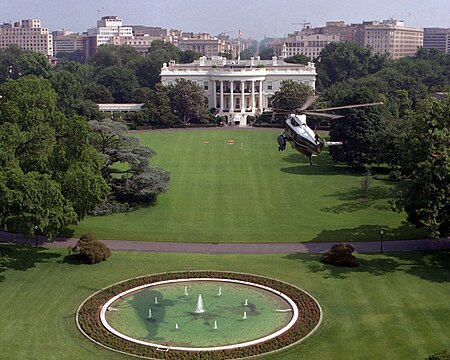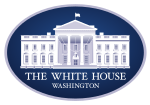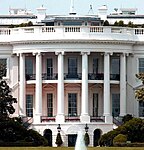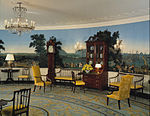South Lawn
Gardens in Washington, D.C.Northwest (Washington, D.C.)Use mdy dates from December 2018White HouseWhite House Grounds

The South Lawn at the White House in Washington, D.C., is directly south of the house and is bordered on the east by East Executive Drive and the Treasury Building, on the west by West Executive Drive and the Old Executive Office Building, and along its curved southern perimeter by South Executive Drive and a large circular public lawn called The Ellipse. Since the address of the White House is 1600 Pennsylvania Avenue NW, and the North Lawn faces Pennsylvania Avenue, the South Lawn is sometimes described as the back lawn of the White House.
Excerpt from the Wikipedia article South Lawn (License: CC BY-SA 3.0, Authors, Images).South Lawn
E Street Northwest, Washington
Geographical coordinates (GPS) Address Nearby Places Show on map
Geographical coordinates (GPS)
| Latitude | Longitude |
|---|---|
| N 38.8966 ° | E -77.0366 ° |
Address
South Lawn Fountain
E Street Northwest
20006 Washington
District of Columbia, United States
Open on Google Maps










